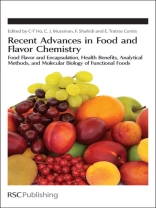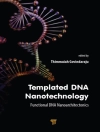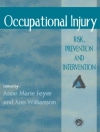This book is the Proceedings of the 12th International Flavor Conference, 4th George Charalambous Memorial Symposium, held May 25-29, 2009 in Skiathos, Greece. The International Flavor Conferences are sponsored by the Agricultural Food Chemistry Division of the American Chemical Society and are attended by leaders in the in the field of flavor and food chemistry. The International Flavor Conferences have been held as a global forum for leaders in the field of flavor and food chemistry to present their results covering recent research activities. As in previous years the conference stresses flavors as its main theme but also includes important topics in food chemistry (analytical methods, packaging storage) and production (safety, patents). Information gathered by researchers in food chemistry have found numerous practical applications for improving foods, and symposia such as this have a goal of transferring basic knowledge to finished products. Recent Advances in Food and Flavor Chemistry: Food Flavors and Encapsulation, Health Benefits, Analytical Methods, and Molecular Biology of Functional Foods will be a useful reference for researchers and other professionals in the industry and academia, particularly those involved directly in food science. This book covers several topical areas and includes: -A historical look at the use of isotopic analyses for flavour authentication -Computer-aided organic synthesis as a tool for generation of potentially new flavouring compounds from ascorbic acid -Butter flavors and microwave popcorn: A review of health issues and industry actions -The aroma of guavas – Key aroma compounds and influence of tissue disruption -Flavour release in lipid rich food matrices; in vitro and in vivo measurement using proton transfer reaction mass spectrometry -A study of the fate of aspartame and flavour molecules in chewing gum utilizing LC/MS/MS and GC/MS -Study on the interaction of selected phenolic acids with bovine serum albumin.
Inhaltsverzeichnis
Front Matter;
Preface;
Contents;
Historical Look at the Use of Isotopic Analyses for Flavor Authentication;
Two Decades of Flavor Analysis: Trends Revealed by Radiocarbon (14C) and Stable Isotope (d13C and d D) Analysis;
Evaluation of Solid Phase Extraction-direct Microvial Insert Thermal Desorption for Volatile Analysis in Berry Fruits;
A Rapid and Efficient HPLC Method for Determination of Vanillin and Related Phenolic Components in Vanilla Extracts Using Sub-2Ám Column Technologies;
Application of New æGreenÆ Solvents for the Extraction of Blackcurrant (Ribes Nigrum L.) Bud Volatile Compounds;
Flavor and Aroma Evaluation of Foods: The Role of the Flavorist in Food Product Development;
Isolation of Flavors from Aromatic Seeds with Liquid Carbon Dioxide;
Identification of Potential Impact Odorants in Four Typical Maple Syrups Using Headspace Solid-phase Microextraction with Gas Chromatography-mass Spectrometry;
Computer-aided Organic Synthesis as a Tool for Generation of Potentially New Flavoring Compounds from Ascorbic Acid;
Butter Flavors and Microwave Popcorn: A Review of Health Issues and Industry Actions;
Fat-derived Volatiles of Various Products of Cows‘, Goats‘ and Ewes‘ Milk;
Aroma Profile of Vanilla in Bourbon Beans;
Comparison of Flavor Components in Dry Sausages Obtained from Commercial and Non Fermented Sausages from Protected Origin;
Production of ¯-carotene-derived Aroma Compounds by Co-oxidation of ¯-carotene Nanoemulsion;
Study along Storage of Volatile Compounds of Two Fish Oils Extracted by Supercritical Carbon Dioxide;
Prebaked Bread with Various Cereal Flour Sources and Effect on the Flavor and Acceptability;
Volatile Compounds of Probiotic Fermented Sausages Produced Using Immobilized L. Casei on Wheat;
Characterization of the Key Aroma Compounds in Colombian White Guavas (Psidium gajava L.);
The Aroma of Guavas û Key Aroma Compounds and Influence of Tissue Disruption;
Volatile Compounds in Supercritical Carbon Dioxide Extracts of Brown Crab (Cancer Pagurus) Processing By-product;
Effect of High Hydrostatic Pressure on Volatile Profile of Cooked Turkey Breast Meat;
Volatile Flavour Compounds of the Fruits of Kumquat Cultivated in North-Westem Greece;
Influence of Light Exposure after Harvest on Aroma Profile of Apples – Ildr°d Pigeon;
Aroma of Chocolate Produced from Tray-fermented Cocoa at Different Stages of Fermentation;
Taste Relaxation Effect;
Flavour Release in Lipid Rich Food Matrices;
In Vitro and In Vivo Measurement Using Proton Transfer Reaction Mass Spectrometry;
Comparison of Spray Drying and Refractance WindowÖ Drying Technologies for the Encapsulation of Orange Oil;
A Study of the Fate of Aspartame and Flavor Molecules in Chewing Gum Utilizing LC/MS/MS and GC/MS;
Measurement of Flavor Release from the Microencapsulated Products;
Characterization of a Granular Cellulose-containing Delivery System for Flavors Using Accelerated Solvent Extraction Coupled with Gas Chromatography;
LC Characterisation of Peanut Skin Phytonutrients: Antioxidant, Radical-Scavenging, and Biological Activities;
Stability Characteristics of Omega-3 Oils and their Randomized Counterparts;
Study on the Interaction of Selected Phenolic Acids with Bovine Serum Albumin;
Resveratrol, Peanut Sprout and Stilbenoids as Bioactive Ingredients Used for Development of Functional Foods or Dietary Supplements;
Quantitative Analysis of Six Major Polymethoxyflavones and Six 5-hydroxylated Polymethoxyflavones in Citrus Peels;
Characterization of Healthful Lipids in U.S. Runner Peanuts Using Chemometrics;
Antioxidants and Antioxidant Activities of Several White and Red Wines;
Composition and Antimicrobial Effects of Savory (Satureja Hortensis) Essential Oils Isolated by Different Methods;
Potential Physiological Activities of Lipophilic and Hydrophilic Fractions from Australian-grown Fruits;
Native vs Extracted Essential Oil: From Chemical Composition to Biological Activities;
Anthocyanin: Multitargeted Phytochemical for Age-related Neurodegenerative Diseases;
Hepatic Cellular Homocysteine Kinetics in the Diabetic State;
In Vitro Study of Phloretin-induced Cell Death Effects in Human Liver Cancer Cells Through Inhibition of Type II Glucose Transporter;
Preventive Effects of Dihydrolipoic Acid on Environmental Toxicant-induced Tumour Promotion in a Two-stage Mouse Skin Turnorigenesis Model;
The In Vitro and In Vivo Inhibitory Effects of Lycopene on the Growth of Human Colon Cancer Cells;
Macrophage-activating Mushroom Proteins and the Possible Pathways;
Comparative Studies on Biological Activity of Inotilone and Methylinotilone from Inonohrs Species;
Subject Index
Über den Autor
Chi-Tang Ho is Professor of Food Science, Rutgers University and has over 36 years experience in teaching and research on food chemistry. Cynthia J. Mussinan is Director of Global Analytical and Sensory Measurement; VP R&D with 42 years experience in the industry. Professor Fereidoon Shahidi is Professor of Biochemistry at the Memorial University of Newfoundland and Ellene Tratras-Contis is Professor of Chemistry at Eastern Michigan University and Project Director of the CSIE Program.












